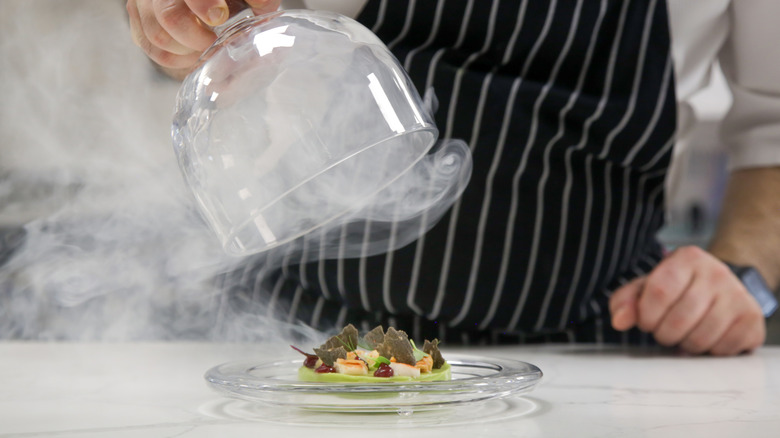
Triocean/Getty Images
For some, it might be just a necessary and somewhat cumbersome part of being an adult, but if cooking is your hobby, or you do it as a living, you’ll know that the sky is the limit when it comes to challenging yourself. Cooking is an art and a science. It takes practice, finesse, and an understanding of flavor, measurements, and heat. It can be as simple as boiling an egg or as complicated as crafting an exquisite piece of sushi.
There are many viewpoints on what constitutes the most challenging kitchen techniques. For Chef Jeremy Ford of Stubborn Seed in Las Vegas, it all comes down to the interconnectedness of each element. “True mastery comes from understanding how salt, acid, fat, and heat interact with each ingredient and knowing how to adjust in real time,” he said. “It’s subtle, but it separates good cooking from great cooking.”
But what are some specific techniques that are considered harder than the rest? We spoke to a wide range of chefs to find out which cooking methods are the most challenging, from the seemingly foolproof to the mind-numbingly complex.
Making sauces
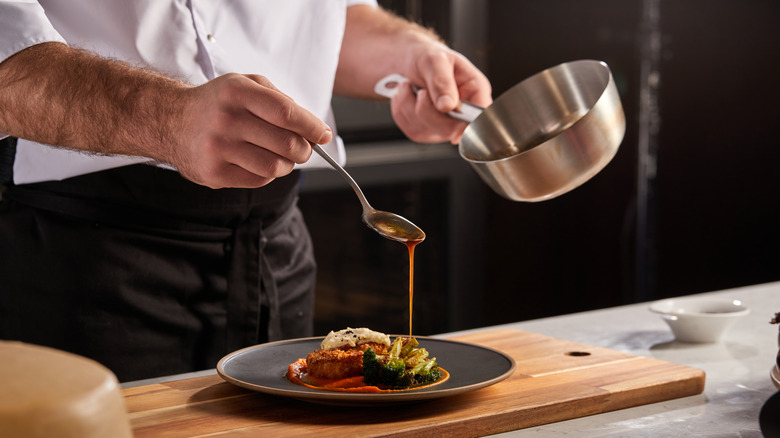
Roman Chazov/Shutterstock
You might think that making a sauce or a puree is as easy as firing up your blender, but according to the chefs we spoke to, it is actually one of the most difficult foods you can make. Jose Francois, executive chef at the Margaritaville Beach Resort Nassau, agreed, pointing to mother sauces such as hollandaise or béarnaise as being particularly difficult to master due to time-consuming processes and the importance of temperature control. Brian Walter, the executive chef at 87 Sussex, agreed, but added that sauces are a crucial part of a chef’s education. In fact, he considers sauces to be the litmus test for whether a person could call themselves a true chef.
On the other hand, Travis Watson, executive chef at the Hotel Californian, doesn’t necessarily believe that all the effort is worth it, at least when it comes to making a classic hollandaise sauce. “The constant whipping and mixing to get a light, fluffy and cohesive sauce can be done much easier with a good blender and warmed butter,” he said, and this whisk-free hollandaise recipe proves it.
Sugar work
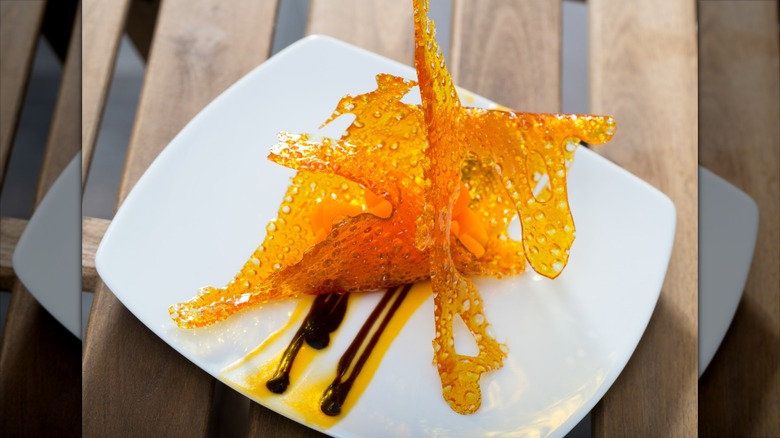
BearFotos/Shutterstock
If you’ve ever watched a baking show, you’ve probably seen the contestants creating ornate, delicate art with sugar. There’s spun sugar, which creates a delicate network of threads as thin as a strand of hair. There’s pulled sugar, which creates such intricacies as ribbons and flower petals that are indistinguishable from real things. You can also add sugar sculpting and blown sugar to the list, both equally challenging and impressive. In short, sugar work is where the line between cooking and fine art becomes non-existent, and it is easily one of the most difficult kitchen skills to master.
According to Chef Jeremy Ford, all that effort might not be worth it, at least in a professional capacity. “From an operational standpoint, sugar pulling and sugar sculpting are incredibly labor-intensive and difficult to execute consistently in a restaurant setting,” he told us. “While the results can be visually stunning, the technique isn’t always practical for everyday service.”
Curing meat and fish
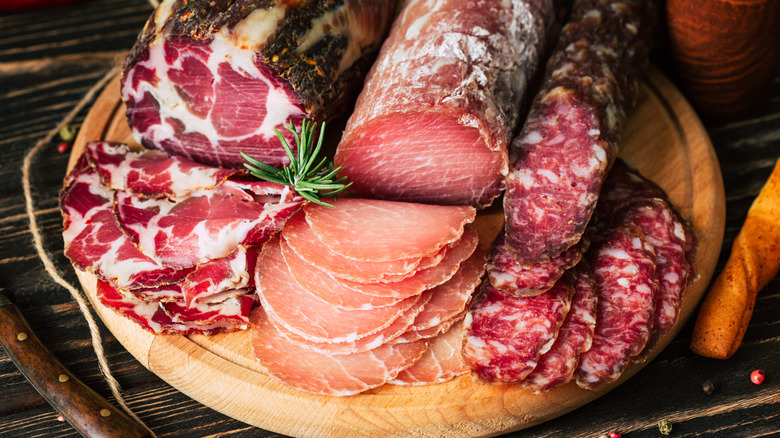
Daria Yakovleva/Getty Images
There is nothing particularly rare or gourmet about cured meat and fish. You’ll find pepperoni pizza on the menus of pretty much every fast food pizza chain in the country. However, according to the chefs we spoke to, it’s worth taking a minute to consider just how specialized the curing process is. Nicole Brisson, executive chef and partner at Brezza & Bar Zazu in Las Vegas, said that curing salumi was her favorite challenging technique to learn. “There is a whole world of techniques: mortadella, prosciutto cotto, nduja, testa, ciccioli, and dry cured hand-cut or forcemeat salamis are just the tip of the iceberg,” she told us, adding that the biggest problems are tests and health and food safety regulations.
Chef Jeremy Ford echoed this sentiment, and he singled out fish curing as a special challenge. “Dry-aging fish has gained a lot of popularity recently, but it’s one of the most challenging techniques to control,” he said. It might not sound like a difficult technique, but the process involves a host of considerations, including managing moisture control, heat, and time. Ultimately, Chef Ford said that there is no match for the depth of umami-rich flavor that dry ageing brings, but that it requires patience and skill.
Making sushi
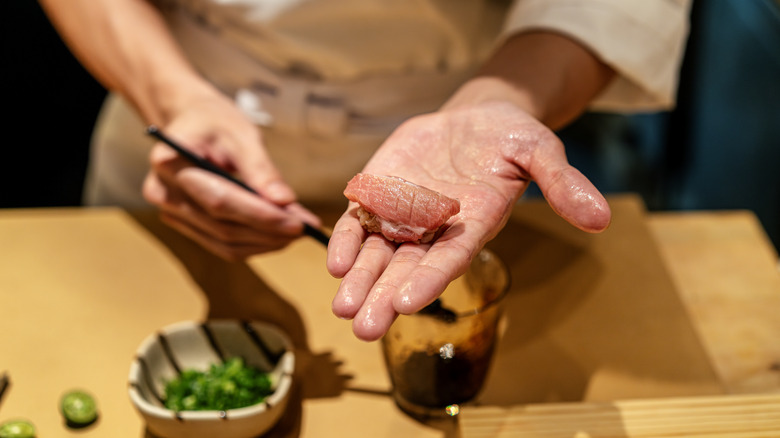
Sammyvision/Getty Images
One of the great joys of going to a sushi bar is watching the chefs prepare each piece of sushi by hand. The process is painstaking, but it results in ornate pieces of edible art and explosions of flavor. Unlike some of the other techniques that chefs talked to us about, sushi has a high barrier to entry. While many home cooks might attempt to make pastry or hollandaise at home, it takes a brave amateur to attempt sushi.
For Chef Masaharu Morimoto, no other technique matches it in terms of difficulty. “Sushi is the most challenging technique to master because it requires precision, deep respect for the ingredients, and years of disciplined practice to perfect something that appears so simple,” he said. “The balance of rice, fish, and even the pressure of the chef’s hand must be just right.” He claims that in sushi-making, you can’t mask flaws and mistakes.
Cooking rice
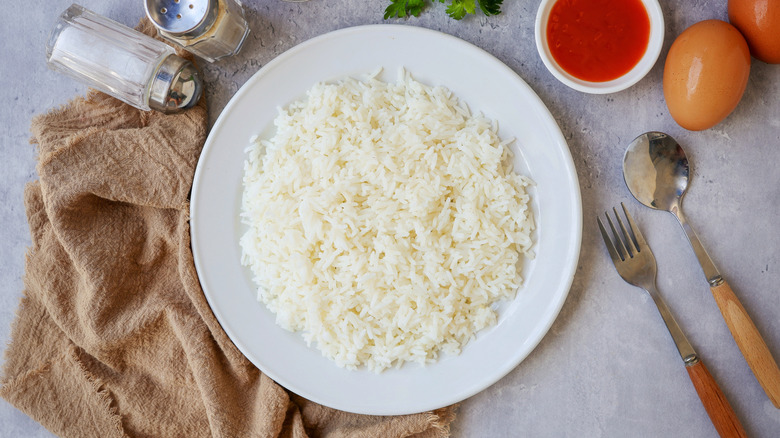
meowwelove/Shutterstock
Sometimes, it’s the simplest recipes that require the most skill. Rice is a primary example. Sure, you can throw it into a pot of boiling water and let it boil, but the results will be miles away from the perfectly steamed version that years of focused practice produce.
Chef Masaharu Morimoto is big believer in the importance of mastering this skill. “It requires an exact water ratio, timing, and even how you handle the rice before cooking. In Japanese cuisine, poorly cooked rice can ruin the entire meal, no matter how good everything else is,” he said.
For Ann Ziata, chef at the Institute of Culinary Education in New York, it all comes down to understanding the type of rice you’re working with. “Cooking rice requires attention to detail, and while white rice isn’t too challenging, brown rice, sushi rice, and risotto all require precise timing and knowing when to stir and when not to. Getting the perfect texture takes a lot of practice,” she mentioned, adding that rice cookers are popular for a reason.
Cooking sous vide
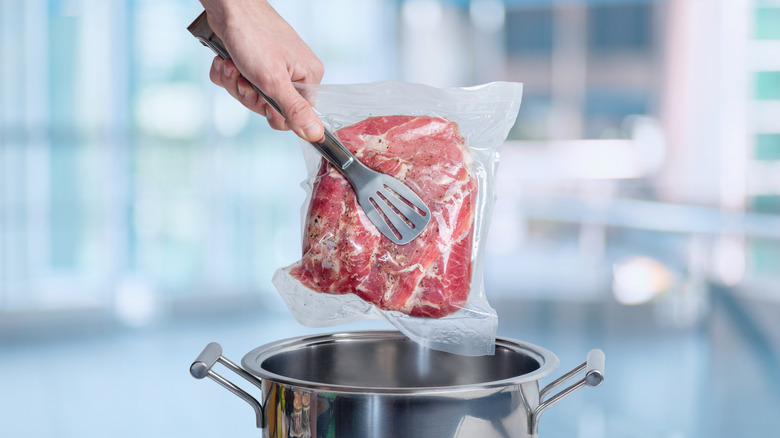
Natali_mis/Getty Images
If you’ve been on TikTok over the past few years, you’ll probably know that cooking sous vide has become all the rage. It involves putting the ingredients you want to cook into a vacuum-sealed pouch and immersing it in warm water. The temperature of the water is paramount, and luckily for home cooks, there are now countless sous vide machines of varying price tags that can bring this cooking method to your kitchen. Don’t be fooled, though. Sous vide cooking is a difficult technique that was frequently mentioned by the chefs we interviewed.
“Sous-vide cooking is revolutionary, but it comes with a unique set of challenges,” said Chef Jose Francois, “Especially for chefs aiming for precision and consistency at scale. But it’s absolutely worth it to learn.” Chef Travis Watson called it the single most challenging cooking technique, but added, “When sous vide is applied accurately, the technique makes almost all dishes better and can take a good dish to amazing if executed perfectly.”
Making eggs
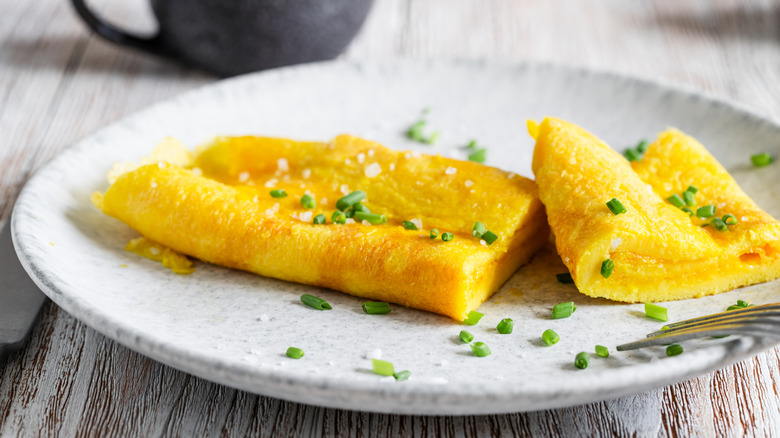
Istetiana/Getty Images
One of the first things many home cooks learn to make is eggs. However, it seems they can be really problematic. “Eggs are the hardest thing to cook perfectly,” Chef Matt King, president and COO of Legal Sea Foods, said. It doesn’t matter if you’re making poached eggs, an omelet, or plain old scrambled eggs, the art of getting it just right is a lot more difficult than it might seem. Chef King revealed whenever he’s hiring chefs, he always asks them to make an over-easy egg as a test.
Chef Jose Francois singled out one egg recipe as being particularly challenging: The French omelet. Anyone who’s made a standard omelet knows that it has its challenges, and what makes a French omelet so tricky is the texture. It must be light, airy, and so tender it practically melts in your mouth. The pan must be hot enough to form a skin on the bottom but cool enough to not brown. Once delicately folded into a taco shape, the omelet will be light yellow on the outside and creamy on the inside. According to Chef Francois, the technique requires such attention to detail that it isn’t practical in a restaurant setting.
Molecular gastronomy
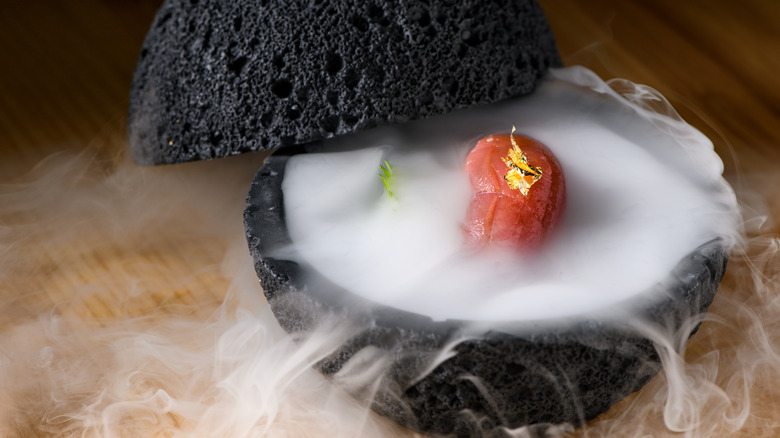
Jordan Lye/Getty Images
Cooking is chemistry. Whether you’re rely on the Maillard reaction to turn your toast brown and fragrant or use acidic marinades to tenderize meat, chemical reactions are the foundation of many recipes. However, there is one area in which chefs take this science to another level. Molecular gastronomy is a culinary art that requires a deep understanding of chemistry to make visual wonders such as aromatic foam, spherification, and smoking cocktails. If you’ve ever been to a top dollar, Michelin-starred establishment, you have probably encountered this wing of the culinary world.
For Chef Nicole Brisson, the process is challenging and fussy. “I feel like it’s a lot of work to disguise the original ingredient,” she told us. “I don’t want an overly complicated gelatinous olive, I just want a high-quality olive. The foams are also a labor-intensive fad that has kind of dropped off. It is hard to achieve a lot of flavor from foams unless you are extremely skilled.”
Knife work
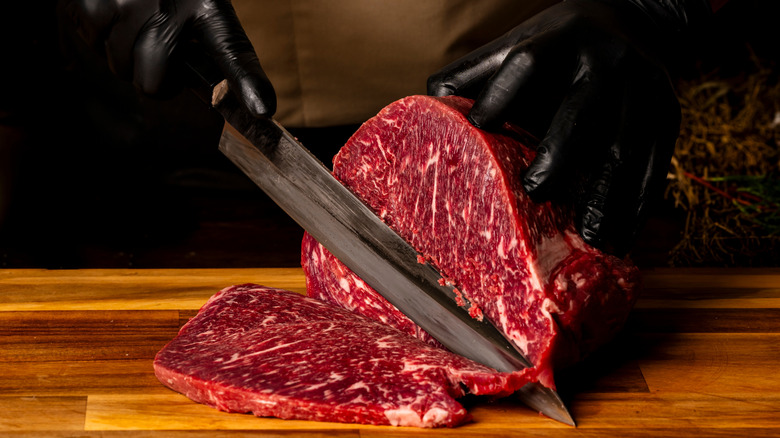
Komsan Loonprom/Shutterstock
When you think about the most challenging culinary skills, you might automatically think about the process of combining and cooking the ingredients, the way you add butter for laminated pastry, or the way you layer ingredients to make intensely flavorful broth. However, one step that you might forget about is chopping, dicing, and slicing. According to Chef Masaharu Morimoto, this is one of the toughest and most rewarding skills you can develop.
“Mastering the art of knife work, especially Japanese techniques, is extremely difficult but worth it,” he told us. “It takes years to learn how to cut with precision, respecting the ingredient’s texture, shape, and flavor. A perfect cut can elevate a dish from good to unforgettable.” If you want to start honing your skills in this area, it’s a good idea to have proper equipment on hand. Our guide for choosing the best chef’s knife is a great place to start.
Koji fermentation
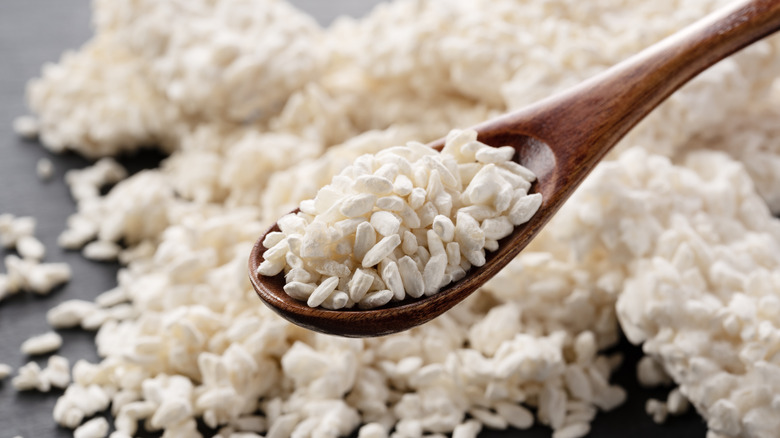
Masa44/Getty Images
There is nothing quite like the taste created through fermentation. Whether it’s yogurt, kimchi, or wine, the sharp funkiness is a hallmark of the process and the key to its allure. There are multiple types of fermentation, including lactic acid fermentation, which produces foods like pickles, yogurt, and sourdough; alcohol fermentation, which produces wine and beer; and acetic acid fermentation, which produces vinegar. Then, there is koji fermentation, achieved by introducing the koji fungus to starch, such as rice and wheat. This is the process by which many Japanese foods are made, such as sake, miso, and soy sauce.
According to Chef Jeremy Ford, koji fermentation might just be the most challenging cooking technique of all, fermentation or otherwise. “It’s not just about following a recipe,” he explained. “It’s about creating the right environment for life to grow. You have to carefully manage temperature, humidity, airflow and timing, and even a small misstep can compromise days of work.” That said, despite the technique being humbling, the reward is worth the effort. Ford added that koji is capable of completely changing and ingredient to reveal some nuances that are impossible to attain any other way.
Engastration
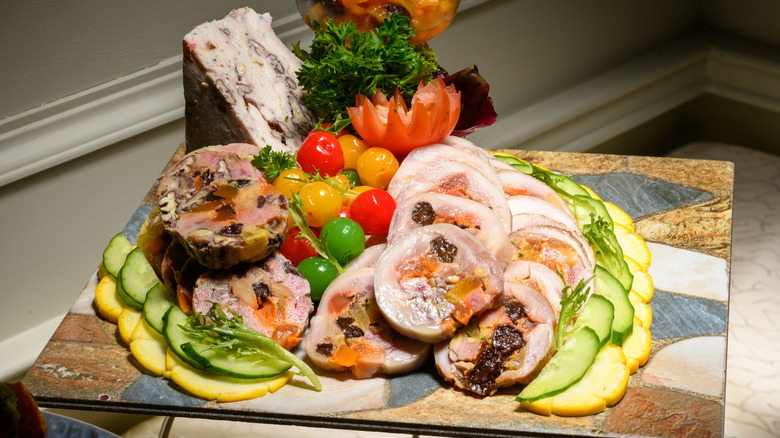
Jordan Lye/Getty Images
Engastration. It’s not a word that gets the mouth watering, but it describes a branch of the culinary world that requires a notorious amount of skill and finesse. It involves wrapping foods (usually meat) in other foods (also usually meat) and requires hours of painstaking work. One of the most common examples is the turducken, a chicken stuffed into a duck stuffed into a turkey. In haute cuisine, there are galantines, which are cold, deboned chickens stuffed with forcemeat slowly poached in stock; and ballotines, which also entail deboning and poaching, but they can be served cold or hot.
For Chef Nicole Brisson, galantines and ballotines fall into the category of challenging but worth it. “You can present either over a beautifully inlaid aspic with fresh herbs, edible flowers, or poached vegetables,” she said. “These are very old techniques but could easily be the show-stopper to any dinner party.” The end result is certainly striking but getting there can take days as you have to cook each individual piece of meat, painstakingly debone and package them all up.
Live-fire cooking
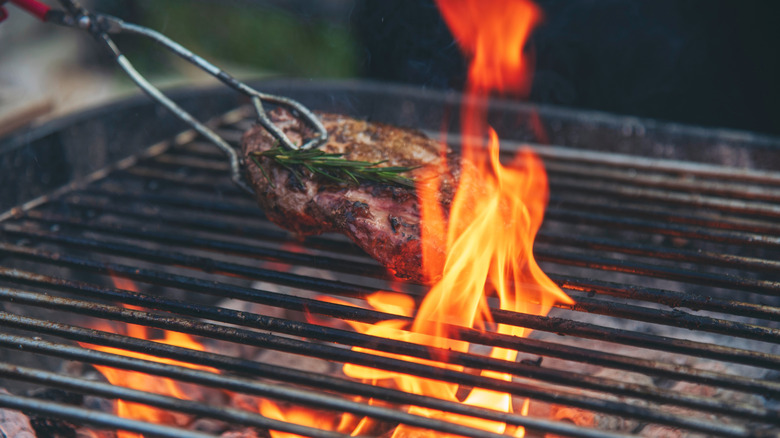
afotostock/Shutterstock
Many of the things we associate with modern cooking –- sous vide machines, blenders, convection ovens, microwaves, and beyond –- are modern inventions. For most of our existence, humans used only an open fire to cook. It wasn’t until approximately 150 years ago that most homes adopted stoves in place of fire. And while all of that might lead you to think that cooking with fire is rudimentary and relatively straightforward compared to our modern equipment standards, nothing could be further from the case.
“Everyone loves to grill but doing it at a high level is a different story,” Chef Jeremy Ford told us. “You’re juggling live flames, managing hot and cold zones, dealing with smoke and fat dripping into the coals -– all while trying to hit perfect doneness and flavor. It’s much harder than it looks and takes years to develop the instinct.”
Joel Hammond, chef de cuisine at Uchi West Hollywood, agreed. “It takes a lot of skill and technique that can only be learned by trial and error,” he said. “Different woods burn at different temperatures and also vary in humidity. Running a consistent heat for extended periods of time, while also keeping the fire going can be very challenging.” He highlighted that you need different temperatures depending on the type of wood and how humid it is, but as the most challenging thing, he mentioned the difficult task of keeping the fire and maintaining a consistent temperature.
Broth and consommé
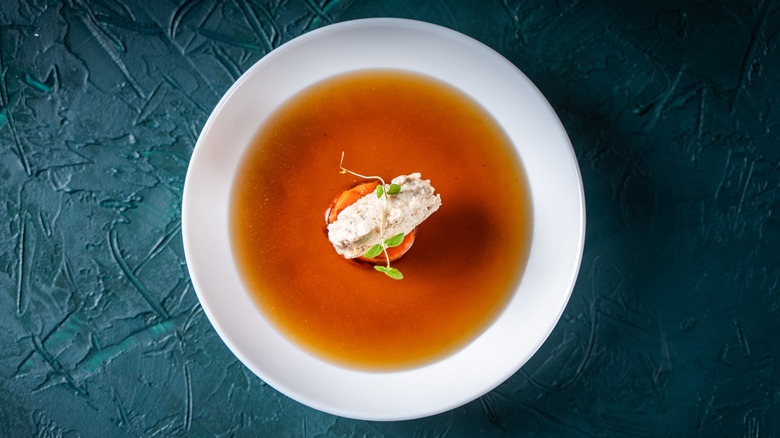
Andy Shell/Shutterstock
Broth is easy to buy at the grocery store, and there’s a reason why — it’s exceedingly time-consuming and difficult to make. To make a flavorful stock from scratch, you need enough ingredients to pack a punch for your taste buds, hours of simmering time, and careful straining. Consommé, a clear but intensely flavored soup from French cuisine, uses egg whites to help clarify the liquid even further.
“Consommé is a labor of love that takes as much skill as it does time,” Chef Ann Ziata said. “In addition to patience and multiple large stock pots, strainers, and sieves, you’ll need to make sure nothing is under- or overcooked, especially the raft of egg whites that clarify the broth into a clear consommé.” She warns that if you overheat it, it might attain an undesirable flavor, and you shouldn’t stir it, as it might not clarify. Despite this, Ziata claims that “consommé is truly one of the most delicious things you will ever taste.”
Chef Masaharu Morimoto singled out ramen broth as being particularly challenging. “It takes many hours and sometimes days of simmering bones and vegetables to achieve the right balance of flavor,” he said. “Each element must be carefully controlled, because even a small mistake can throw off the entire bowl.”
Dough lamination
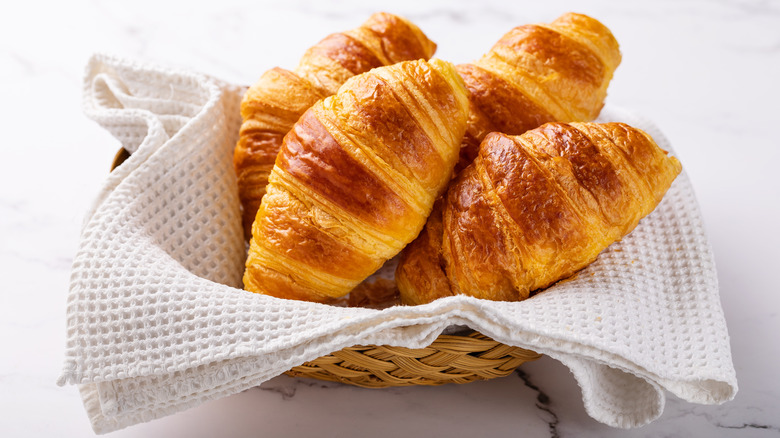
Cris Cantón/Getty Images
If you’re a fan of pastries, you will probably know the distinct joy of biting into a flaky, melt-in-your-mouth croissant. But that texture is hard won, requiring the baker to fold fat between layers of dough in a process known as lamination. There are two ways to laminate dough, but according to the chefs we spoke to, the technique is always challenging.
“Creating laminated doughs (croissants, puff pastry) involves precise temperature control and timing, as well as multiple folds and rests over hours or days,” Chef Jose Francois said, highlighting that it is easily “ruined by overworking or temperature fluctuations.” This means that pastry requires enough space and professionals that will tend to it, so Francois recommends frozen versions as a suitable alternative.
Chef Brian Walter shared similar sentiments. “To become proficient at pastry and baking one needs precise timing, technique, atmosphere, temperature and product,” he explained. “Some ingredients work differently with humidity, and some react with certain metals etc.” For Ann Ziata, the process isn’t always practical for home bakers, either. She explains that the result is always questionable and suggests milk bread or crescent rolls as much easier options.
Cooking proteins
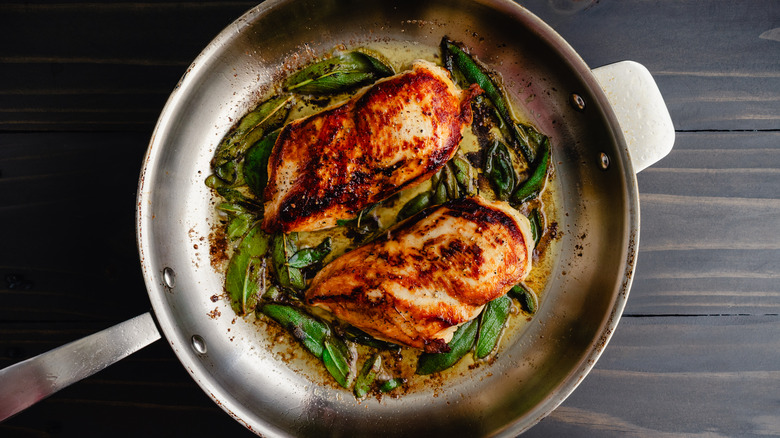
Candice Bell/Getty Images
Protein is all the rage these days, and besides all the simple ways to incorporate protein into your diet, you can also just eat fish or meat. Whether you’re a fan of steak or fish, it seems pretty easy to fire up a skillet or the oven and let the heat work its magic. However, according to professionals, cooking proteins is one of the most challenging culinary skills.
“Many cooks think they are good at it but most are not,” Chef Brian Walter said, explaining that cooking proteins requires both intuition and skill. Among other things, you need to know whether the protein you’re working with needs to rest, and if so, for how long. According to Chef Walter, only cooks who can consistently execute this task without having anything sent back to the kitchen are truly respected by their colleagues.
Chef Matt King singled out sauteing protein as being particularly difficult and noted that the cook has to understand heat, fat, and smoking points in order to do it well. If all of these areas are attended to, you’ll get the perfect Maillard reaction, but it isn’t just a matter of firing up the grill and setting a timer.


Dining and Cooking